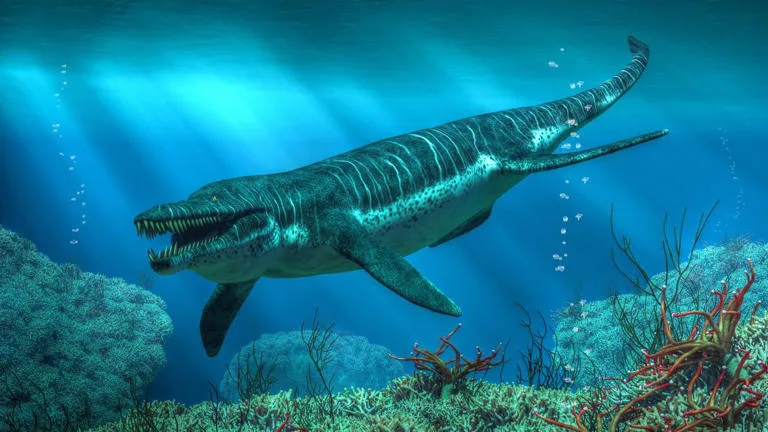Table of Contents
‘ultimate killing machine’ discovered by scientists

The skull of a giant sea monster has been unearthed from the rocks of Dorset’s Jurassic Coast.
The pliosaur was a marine reptile that terrorized the oceans about 150 million years ago. The fossil is two meters long and is one of the most complete specimens of its type ever discovered.
Paleontologist Steve Etches told BBC News, “It’s one of the best fossils I’ve ever worked on. What makes it unique is how complete it is.”
“The lower jaw and upper skull are meshed together, as they would be in life. Worldwide, hardly any specimens with that level of detail have been found. And if they have, there are a lot of pieces missing, whereas this, “Although it’s a little deformed – every bone is there.”
You really get a sense of how big the creature was when you realize that the skull is longer than the height of most humans.
I got to meet a Pliosaur! https://t.co/7CdpzDAdhq pic.twitter.com/Yf0rPqVJNQ
— Steve Harris – BBC Radio Solent's Dorset Breakfast (@SteveHarrisDJ) December 10, 2023
The fossil has 130 teeth, each tooth marked with fine ridges. These would have allowed the pliosaur to pierce the flesh and then immediately retract its dagger-like teeth, quickly ready for another attack.
“The animal would have been so massive that I think it would have been able to effectively hunt down anything unfortunate enough to be in its vicinity,” says Dr. Andre Rowe of Bristol University.
“I have no doubt that it was like a T. rex underwater.”
pliosaurs
Pliosauroidea is an extinct group of plesiosaurs, known from the Early Jurassic to the early Late Cretaceous. They are best known for the suborder Thalassophonia, which contained crocodile-like short-necked forms with large heads and huge toothed jaws, commonly known as pliosaurs. More primitive non-thalassophonian pliosauroids resembled plesiosaurs in possessing relatively long necks and small heads. These originally included only members of the Pliosauridae family of the order Plesiosauria, but now also include many other genera and families, the number and description of which vary according to the classification used.

Distinctive features are a short neck and an elongated head, with hind flippers larger than the front flippers, unlike plesiosaurs. They were carnivorous and had many sharp, conical teeth in their long and powerful jaws. Pliosaurs ranged from 4 to 15 meters in length and more. Their prey may have included fish, sharks, ichthyosaurs, dinosaurs, and other plesiosaurs.
The largest known species are Kronosaurus and Pliosaurus macromerus; Other well-known genera include Romelosaurus, Pelonestes, and Macroplata. Fossil specimens have been found in Africa, Australia, China, Europe, North America, and South America.
Many early (from the early Jurassic and possibly the latest Triassic, i.e. Rhaetian) primitive pliosauroids were similar in appearance to plesiosauroids and, in fact, would have been included in the family Plesiosauridae.
Fossil lover Phil Jacobs came across the end of a pliosaur’s snout lying in a shingle while walking on a beach near Kimmeridge Bay. Too heavy to carry, he, along with Steve Etches, resorted to a makeshift stretcher to carry the fossil fragment to safety.
The Spirit will be featured in David Attenborough’s special ‘Attenborough and the Giant Sea Monster’ on BBC One on New Year’s Day.
You must also tell us your opinion about this article in the comment box. Also, if you liked this article, then share it and stay connected with your own website gobloging to read other similar articles.
img credit :- Unsplash
media credit :- BBC
media credit :- New Scientist
🔵🟣🟡⚫
